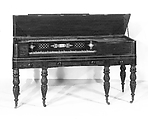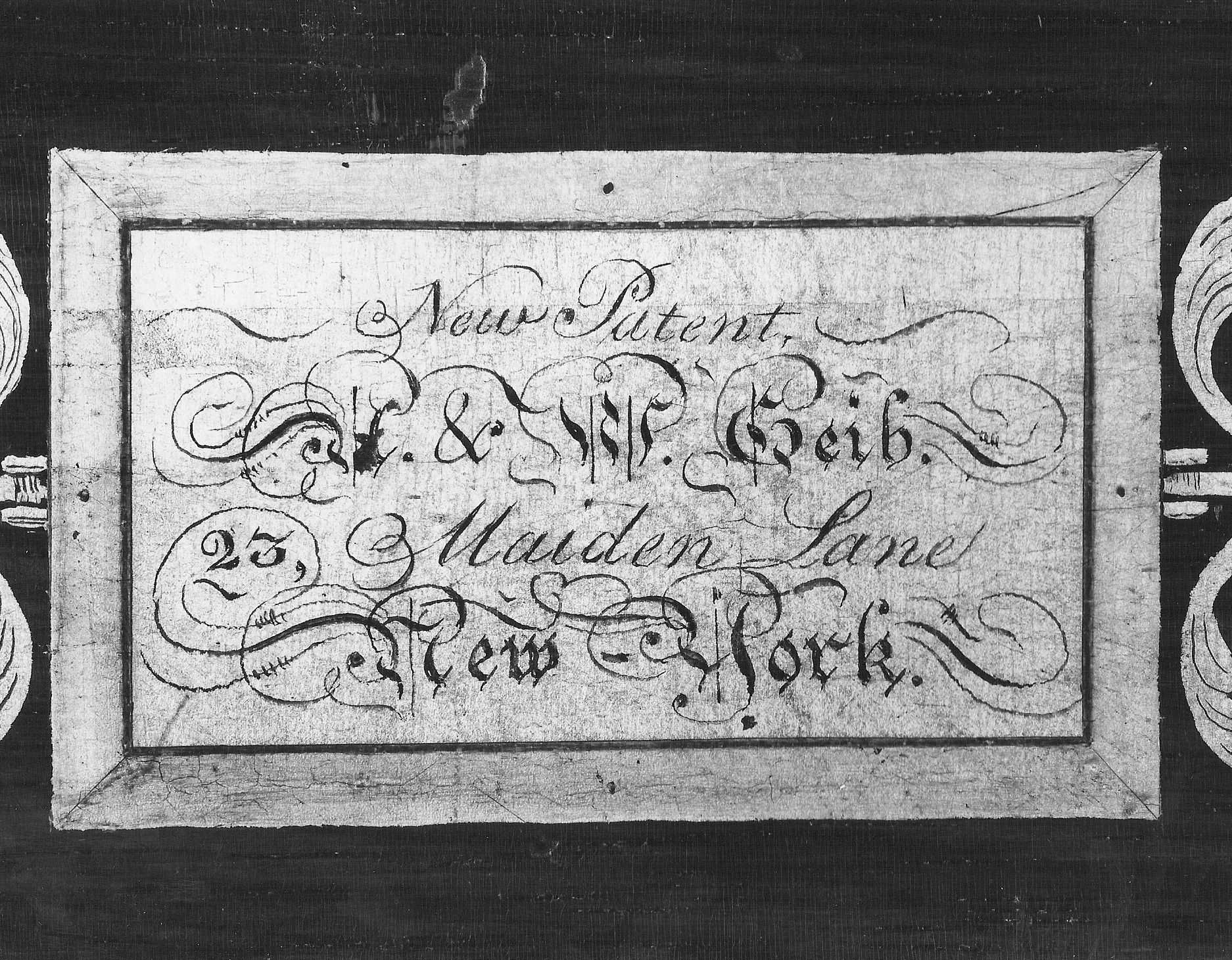Square Piano
Not on view
John Geib emigrated from from London to New York in 1798. John Geib and Son are listed in New York directories 1804-1814. It is not known whether Geib's piano cases were made by his own workmen or by established cabinetmakers. John Geib Jr. was connected with Duncan Phyfe's shop.
Technical description: Mahogany veneer over softwood, mahogany legs turned with helical reeding and carving with brass mountings and casters, pedal lyre suspended from leg (missing), case decorated with rosewood crossbanding, with rounded corners and striping of light and dark woods and brass and brass molding, nameboard veneered with rosewood with brass inlay and fretwork panels, three drawers with turned knobs beneath case, central drawer concave, ivory naturals with molded fronts, ebony accidentals, compass FF-c4 (68 keys), English double action (single escapement), crank type dampers with wires passing between and above strings and carrying cloth dampers, 1 damper pedal (missing), double-strung throughout originally, but 7 lowest notes now single-strung, at present only 2 lowest notes wound, pierced and unpierced oblong tuning pins. (L. Libin 3 August 76.)
Due to rights restrictions, this image cannot be enlarged, viewed at full screen, or downloaded.
This artwork is meant to be viewed from right to left. Scroll left to view more.



